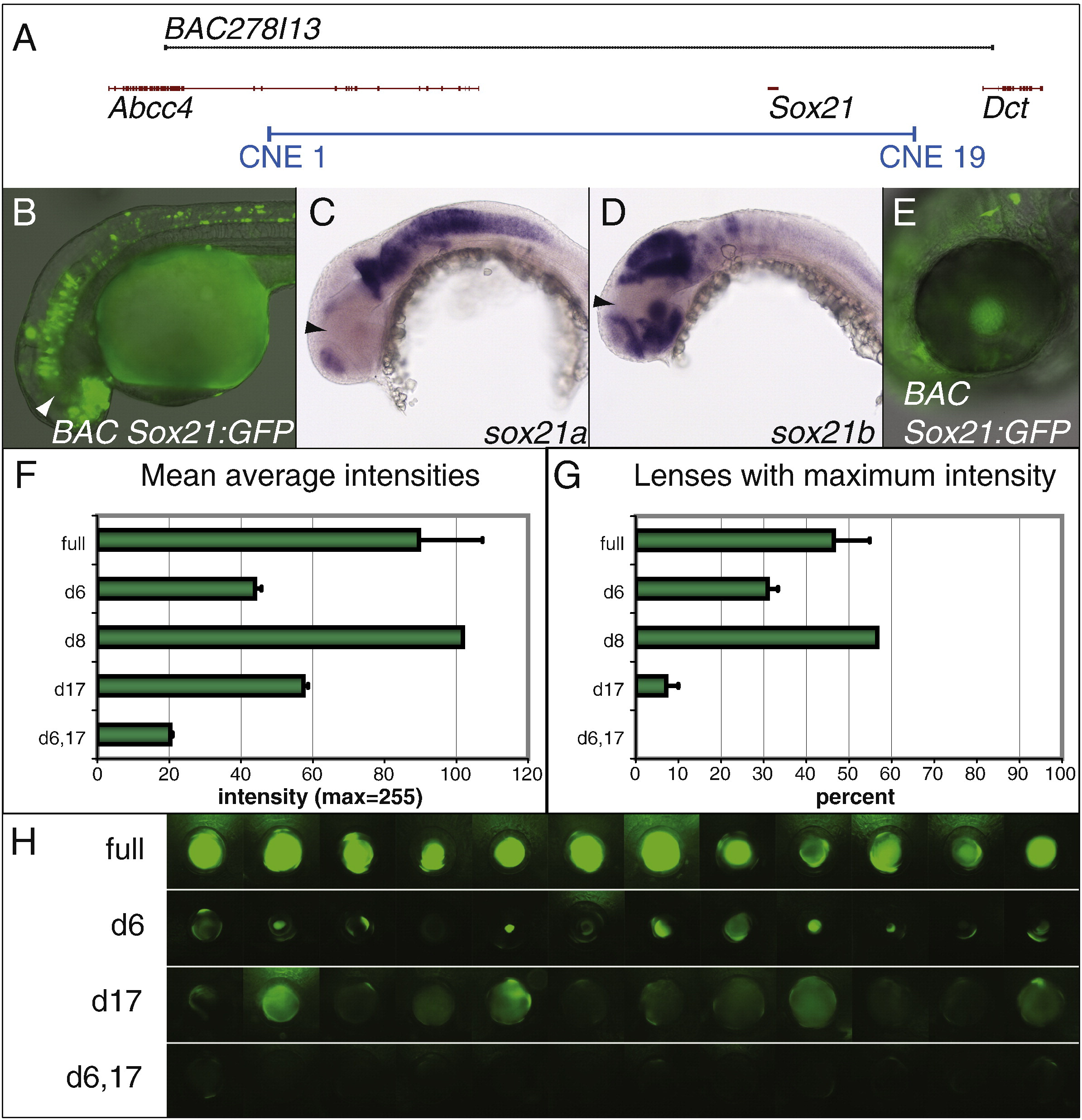Fig. 3
Lens expression from a Fugu Sox21 BAC. (A) Genomic region included in Fugu BAC278I13. The BAC is shown as a black line, exons in red and the region including the Sox21 CNEs in blue. The CNE region is shown by indicating the first upstream CNE and the last downstream CNE. (B) Transient expression of BAC Sox21:GFP in zebrafish at 30 hpf. (C, D) Whole-mount in situ hybridizations for zebrafish sox21a (C) and sox21b (D) at 30 hpf. (B–D) Absence of expression in the dorsal diencephalon is indicated with arrowheads. (E) Transient expression of BAC Sox21:GFP in the zebrafish lens at 52 hpf. (F, G) Intensity of GFP-fluorescence in lenses after the injection of different variants of BAC Sox21:GFP. Error bars indicate standard error of the mean. (F) Mean average intensities of lens expression. (G) Percentage of lenses with maximum levels of intensity. full = BAC Sox21:GFP including all CNEs (n = 51); d6 = deletion of CNE 6 (n = 51); d8 = deletion of CNE 8 (n = 30); d17 = deletion of CNE 17 (n = 43); d6,17 = double deletion CNE 6/CNE 17 (n = 25). (H) Lens expression of different variants of BAC Sox21:GFP. Each row shows 12 representative images of transient GFP expression in the lens at 52 hpf. Note that GFP expression in row ‘d6’ tends to be restricted to the centre of the lens whereas residual GFP-expression in row ‘d17’ is often detected in the entire lens. Moreover, the construct lacking both CNEs (d6, 17) performs consistently worse than the single deletions and fluorescence never exceeds background levels. Abbreviations of BAC constructs as in (F, G).
Reprinted from Developmental Biology, 365(1), Pauls, S., Smith, S.F., and Elgar, G., Lens development depends on a pair of highly conserved Sox21 regulatory elements, 310-318, Copyright (2012) with permission from Elsevier. Full text @ Dev. Biol.

